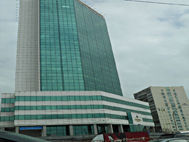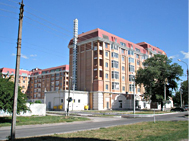Walling in construction
You probably noticed that in one house it is easy and pleasant, and as we say “easy to breathe”, in the other, on the contrary, we have a feeling of discomfort, or even get sick. The reasons why in some houses we feel good, and in others worse, are actually various, however, some of them are directly linked to the nature of the project and the construction materials, which make up the walls. Stopping our choice on a particular project, we pay more attention to its external beauty and convenience and rarely to how this project and the construction materials influence the health of future occupants. Talking about the walls and their construction techniques is to talk about the problem. Before deciding, which technology should be used to build the wall, let’s define our requirements: durability, ecological compatibility, safety and comfort of living, in other words, defining the ideology of construction. That will impact the choice of materials, technology and more.
During the construction of the walls for houses and cottages the following materials are used the most: brick, lightweight concrete (foam concrete, expanded clay lightweight concrete, etc.), wood (beams, log) and wood with a heater (frame walls). For the construction of partition walls undeservedly rarely are used relatively new material – cement particle board.
In choosing the material of the walls, it is necessary to consider the following points.
1. “The rule of uniformity” – all main walls (exterior and interior, which is based on the overlap) should be constructed of the same material and build on the same foundation. Permissible combination may be of brick and lightweight concrete, as well as cement particle board and wood frame walls with paneling.
2. The distance between the main walls (supports for wooden joists) should not exceed 4 meters, this distance can be extended up to 7 m with a reinforced concrete slab (for brick walls).
3. Materials for walling construction and its design concept should be selected in terms of local climatic conditions, economy, and strength and durability of the building, interior comfort and architectural expressiveness of the facades.
By their intended purpose walls can be:
· External
· Internal
By the bearing of the loadings walls are divided into:
· Supporting (load-bearing)
· Non-bearing
Depending on the used materials, walls are conventionally divided into the following types:
· Wood walls from logs, beams, wooden frame
· Brick walls of solid and hollow clay
· Clay and calcium silicate bricks and blocks
· Stone walls of cobblestone, limestone, sandstone, limestone, travertine, etc.
· Light concrete walls of gas silicate, ceramist cinder, arbolite, sawdust concrete
· Soil-concrete walls from adobe brick, hard packed ground.
Depending on the design concept walls can be the following types:
· Chopped from logs collected from wooden beams,
· Building block from brick and small blocks weighing more than 50 kg.,
· Panel or panels from prefabricated elements with high walls of one floor,
· Frame from posts and studs with a covering sheet or sawn materials
· Monolithic from concrete and soil
· Composite or laminated with various materials and designs.











